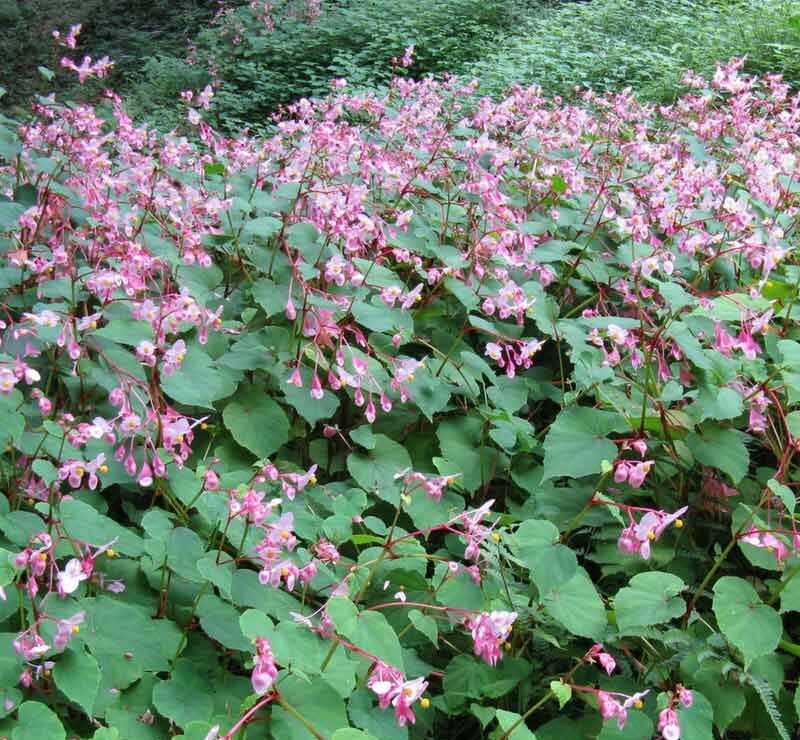
The exotic-style garden is attracting a growing number of gardeners. Bamboo, palm, banana are some of the most popular plants to create scenes that evoke the tropical jungle, but there are many others! For this dream to become accessible and sustainable, outdoors and even in cold climates, there is only one option: to move towards truly rustic plants , resistant to the rigors of winter. Here is a small selection of our favorite plants (shrubs and perennials)!
Trachycarpus fortunei, known as “Hemp Palm” – Hardiness: – 18 °
No, palm trees, it’s not just on the Croisette – it’s also in the north when it comes to, for example, Trachycarpus fortunei , which can withstand temperatures up to -18 ° C. This ability to cope with frosts is due to its mountainous origins (China and Japan) but also to the thick fiber that protects its trunk. Reaching 8 to 10 meters in height, it is planted in the open ground, which it prefers rich and light and enjoys and sun or partial shade.
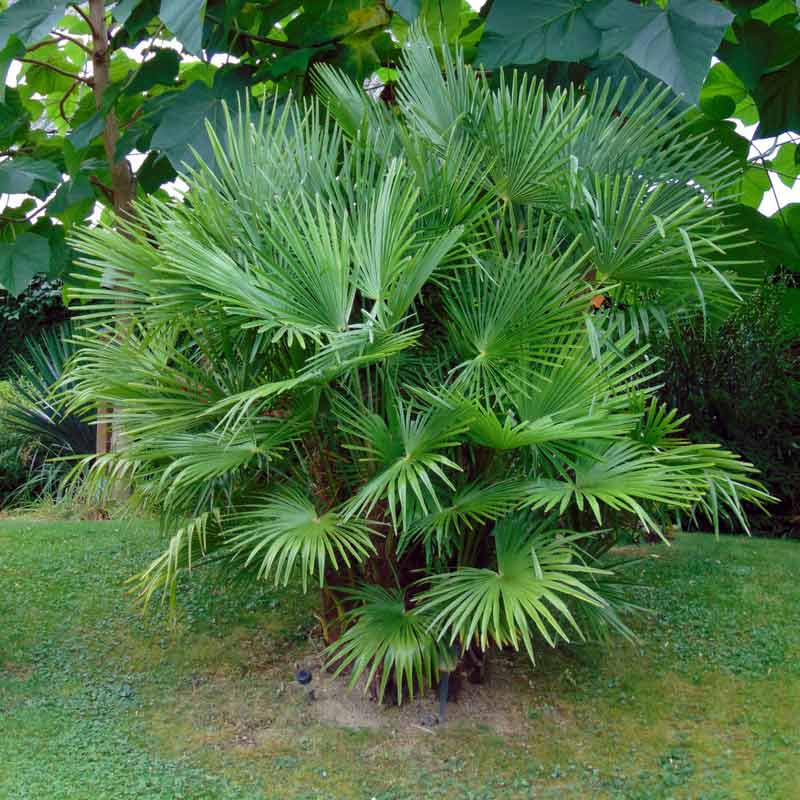
The banana tree or Musa basjoo – Hardiness: – 12°C – 15°C
The Musa basjoo is a hardy, outdoor banana tree , also called “Japanese banana tree”. It is a valiant which generally does not produce fruit but which deploys its large decorative leaves each year. It can reach more than 2 meters in height, and even more, if you take care to provide it with what it requires: regular watering and rich soil. Its only weakness lies in poor wind resistance . If you do not want these leaves to be transformed into miserable brushes, it is essential to protect it by planting it in an area already planted with trees or a space enclosed by walls.
Slightly less hardy, nevertheless very resistant, discover also the banana tree sikkimensis (or Banana tree of Sikkim) Red Tiger , it is a variety with graphic leaves, light green with purple underside, elegantly streaked with burgundy.
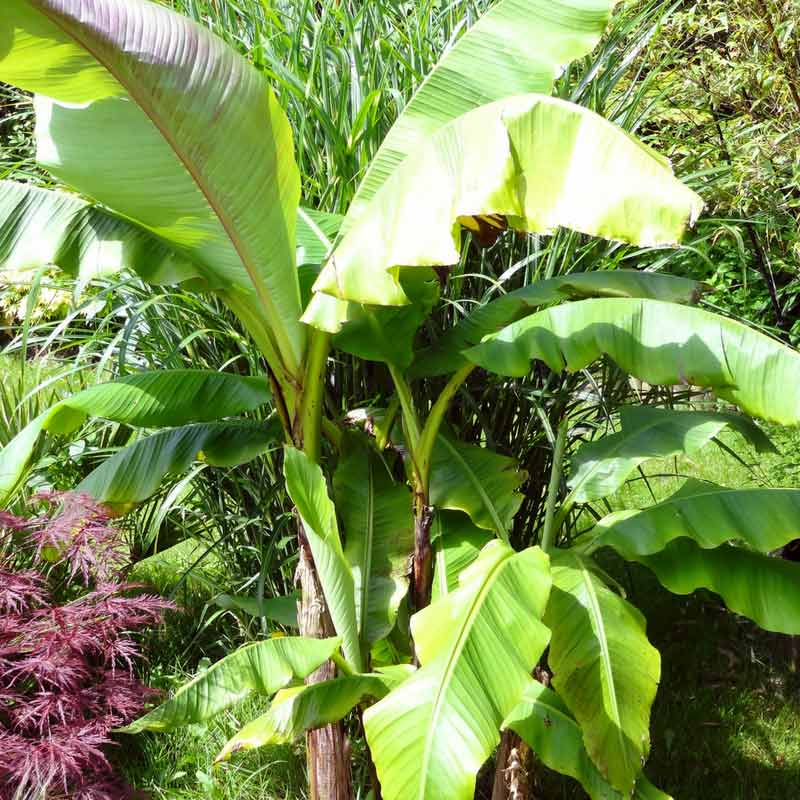
Bamboos: Phyllostachys vivax and Fargesia robusta – Hardiness: – 20°C and – 15°C
Bamboos are among the great classics of exotic gardens, but their hardiness varies greatly depending on the species and varieties. Among the most spectacular, we particularly like the Phyllostachys vivax ‘Huangwenzhu’ , a giant bamboo (tracing… provide an anti-rhizome barrier) which raises its green canes streaked with yellow to more than 10 meters high. Of rapid growth, it will quickly form a small forest. Relatively more modest in size (4 to 5 meters high) and non-tracing, the Fargesia robusta is better suited to small gardens . It has long green leaves and bright anise green canes.
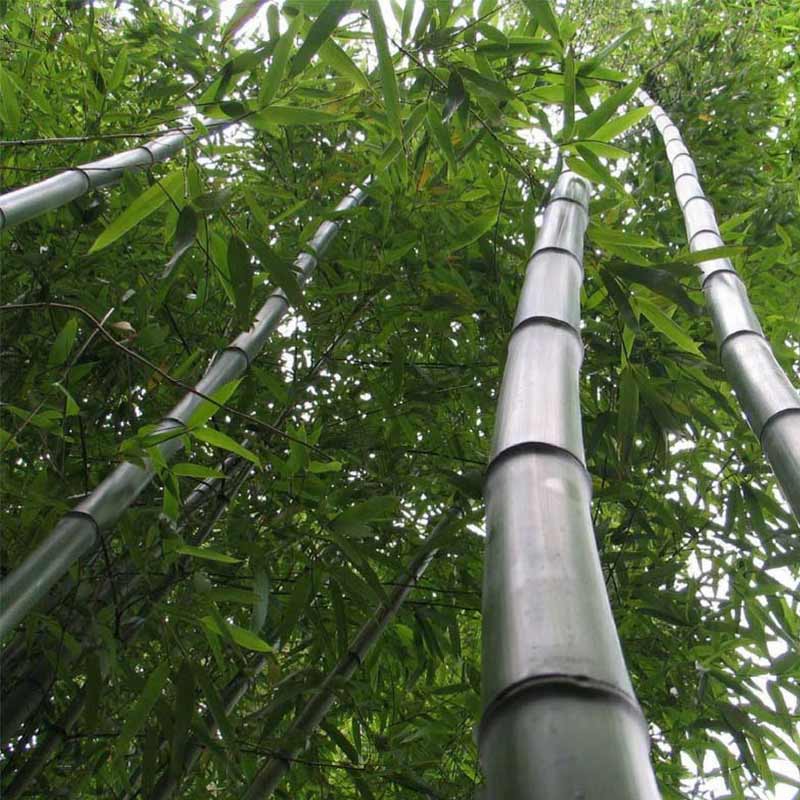
Fatsia japonica Spider’s Web – Rusticié : – 15 °C
Fatsia japonica ‘Spider’s web’ is a shrub that does not lack personality! About 2 meters high, this Aralia shows evergreen foliage, dark green largely splashed with creamy white. Its webbed leaves can reach up to 20 cm in diameter. They are surmounted, in summer, by globular white flowers which then turn into black berries, also decorative. It is a shrub that likes shade or partial shade, in cool soil.

Tetrapanax papyrifera Rex, Rice paper plant – Hardiness: – 10°C
Halfway between a shrub and a perennial, the Tetrapanax papyrifera ‘Rex’ is an exuberant plant that seduces with the XXL size and the cut shape of its leaves which unfold like a parasol. Native to China and Japan, it is a rhizomatous plant, like bamboo, which tends to spread out and may require the installation of an anti-rhizome barrier. It is grown in the non-burning sun or in partial shade, in fertile and rather cool soil. Its loose habit and Asian charm make this plant a perfect complement to bamboos.
Note that the aerial parts of this plant are destroyed at -5°C, but it leaves the stump above -10°C, once well established.
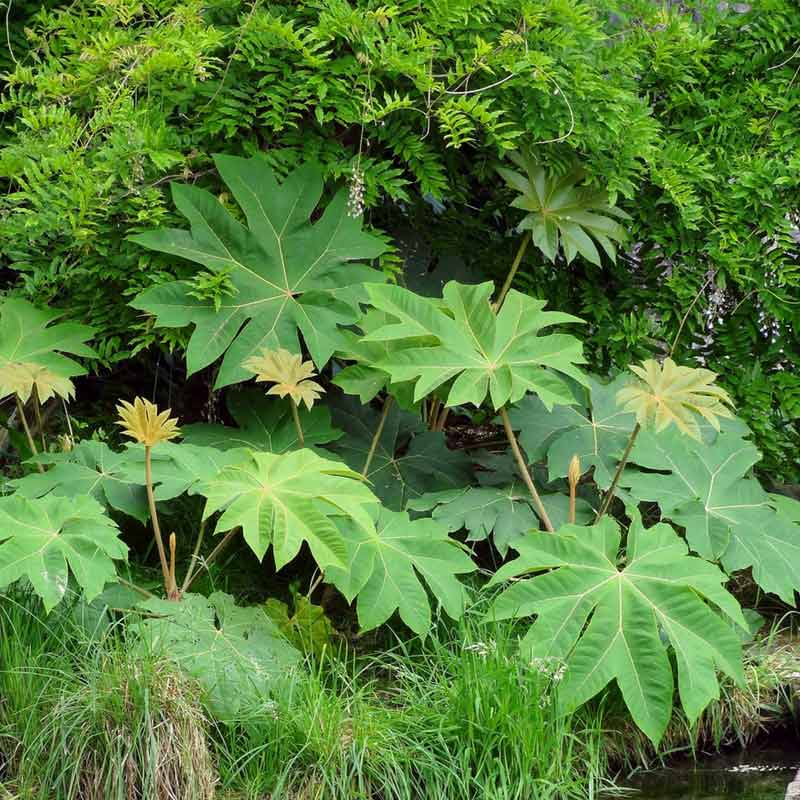
Colocasia Pink China – Elephant Ear – Hardiness: – 10°C – 12°C
Lush, the Colocasia ‘Pink China’ stands out for its heart-shaped shape but also for the color of its large foliage : a pretty soft bluish green which contrasts with the pink of its petioles. Well known to indoor plant lovers, this colocasia can be grown in the garden, providing mulch to protect it during the winter. It is planted in the sun or in partial shade, in cool, humus-rich soil and appreciates regular watering in summer.
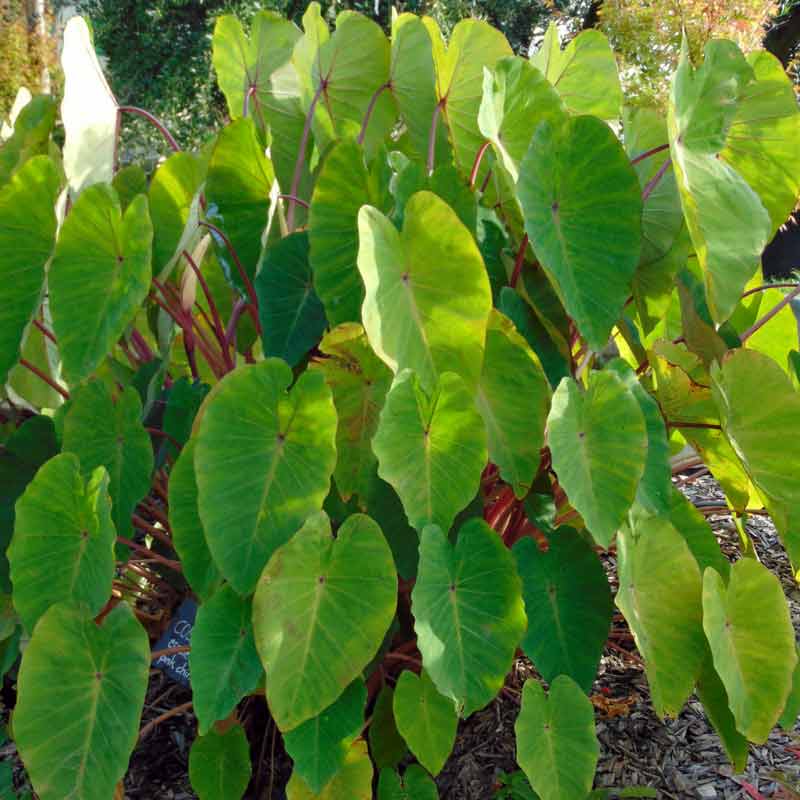
Astilboides tabularis – Hardiness: – 20°C
Astibloides tabularis (sometimes called Rodgersia tabularis) is a spectacular understory plant distinguished by its large, entire, rounded leaves of about 60 cm in diameter. It quickly forms a clump that can reach 1 meter high 70 cm wide and even more if the soil suits it. Its generous foliage is accompanied, at the beginning of summer, by a flowering in light spikes, creamy white. It is an ideal shade perennial that likes humus-rich, cool to moist but well-drained soils.
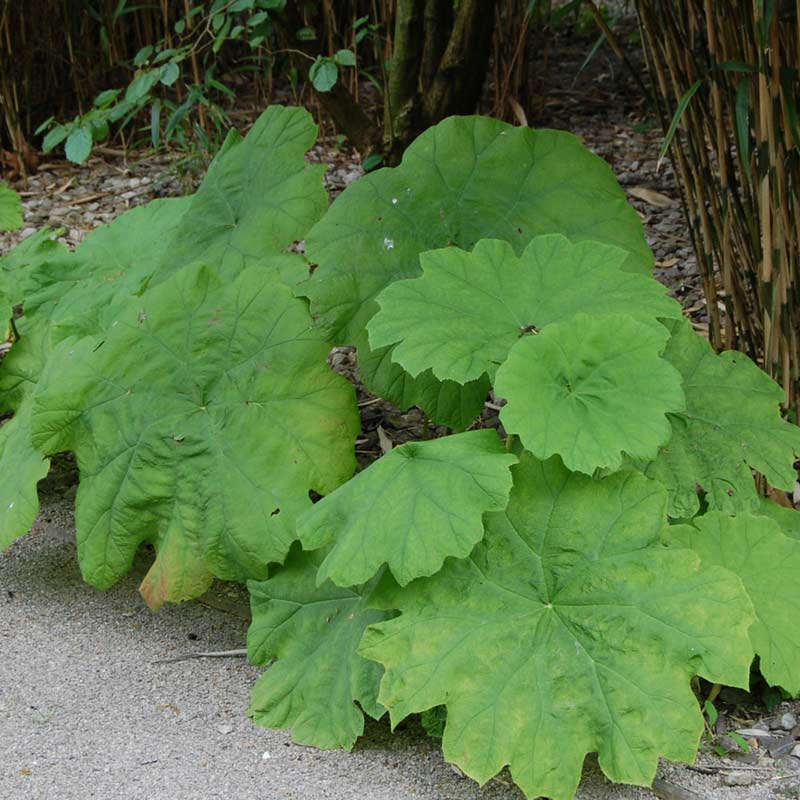
Dryopteris wallichiana, Large fern with golden scales – Hardiness: – 15°C
Majestic, the Dryopteris wallichiana is a large fern which, in spring, unrolls remarkable cut-out foliage highlighted with a black vein. Tall in stature (1 to 1.5 meters high) and beautiful in appearance, it is somewhat reminiscent of tree ferns, especially when, with age, its short basal trunk develops. It is a fairly easy variety to grow, in deep soil and very rich in humus. It will be superb in beds and can be accompanied by another hardy fern: the Eastern Ostrich Feather Fern (Matteuccia orientallis) .
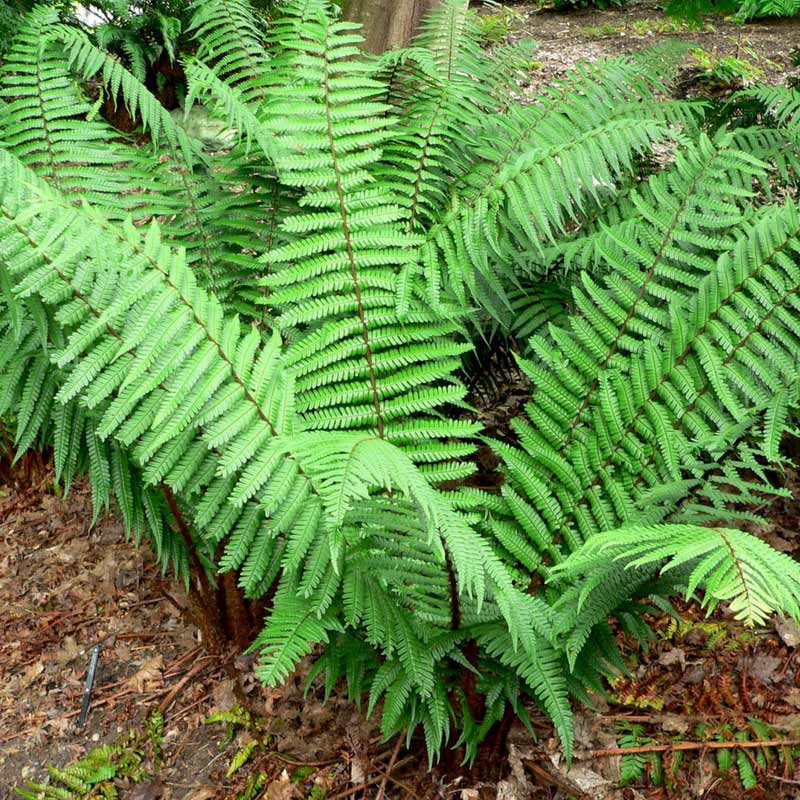
Hosta Empress Wu
Hostas are well known for their hardiness and their ability to grow in shade or partial shade. While some slip easily into a classic bed, others offer such abundant vegetation that they easily find their place in a tropical-looking garden. This is the case for the giant Hosta ‘Empress Wu’ , certainly the largest variety which, in a few years, reaches 1.3 meters in all directions and spreads magnificent blue-green foliage. It is a perennial that requires food and water to express its full potential.
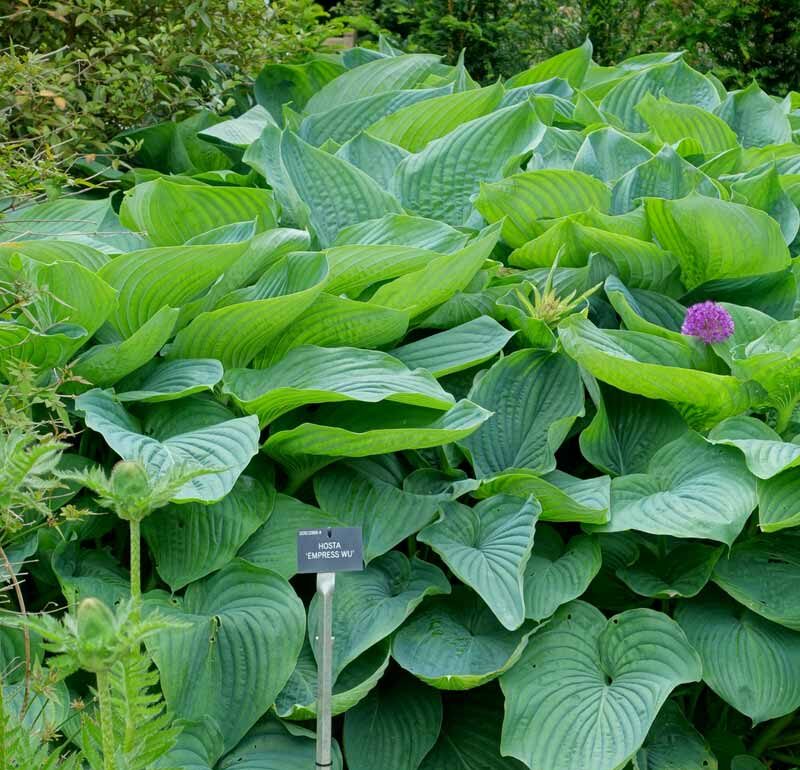
Begonia grandis evansiana – Hardiness: – 15°C
Begonias are not only reserved for planters: the begonia grandis evansiana , a botanical species, perennial and resistant down to -18°C here is proof of this! Its heart-shaped green foliage forms a beautiful bushy tuft about 80 cm high and 50 cm wide and is adorned, all summer long, with numerous small pink flowers borne on reddish stems. It is grown in the ground or in pots, ideally in partial shade and in rich, cool soil.
